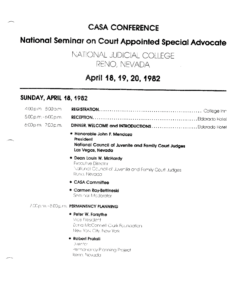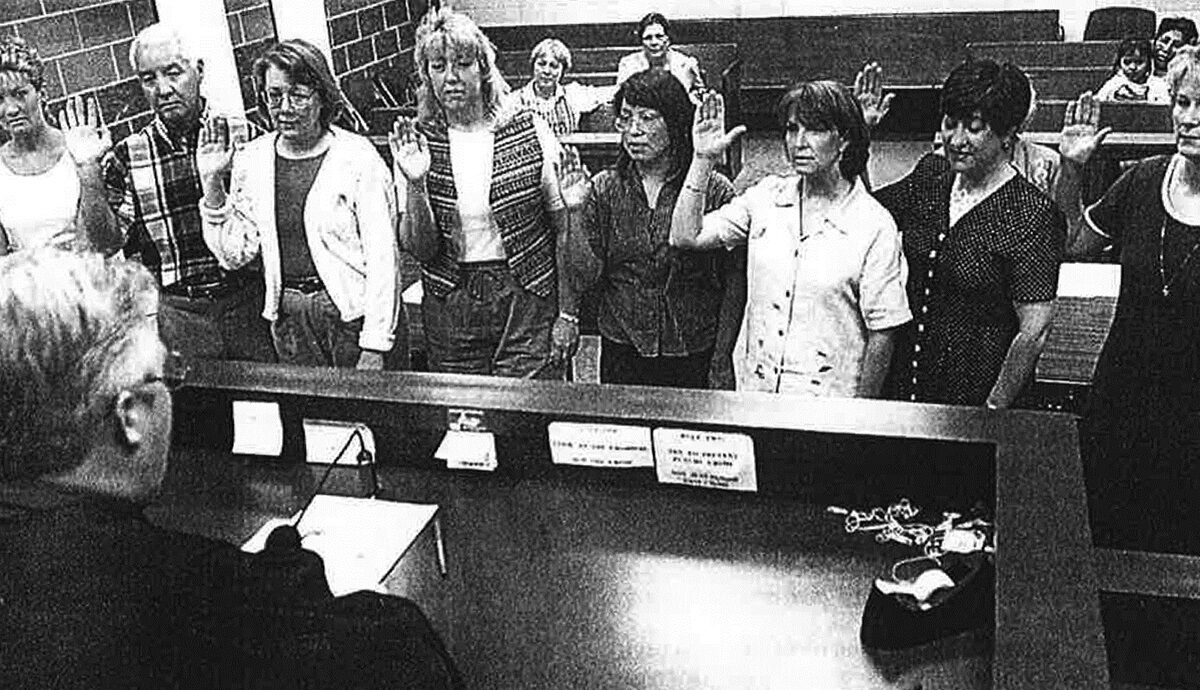December 30, 2022
Past as prologue – From 40 to the future
NEWS
 This year, the National Court Appointed Special Advocate/ Guardian ad Litem (CASA/GAL) Association for Children celebrated 40 years of impact through best-interest advocacy for children and youth who have experienced abuse or neglect. As we close out this milestone 40th anniversary year, we reflect on how the CASA/GAL movement started.
This year, the National Court Appointed Special Advocate/ Guardian ad Litem (CASA/GAL) Association for Children celebrated 40 years of impact through best-interest advocacy for children and youth who have experienced abuse or neglect. As we close out this milestone 40th anniversary year, we reflect on how the CASA/GAL movement started.
1977 seems like a long time ago. In that year, the space shuttle made its first test glide. The first Star Wars movie was in theaters. Jimmy Carter was president, and Elvis Presley died. That year was also a milestone of sorts in child protection. For the first time, the number of children in foster care topped half a million.* A new phrase—foster care drift—became a popular way to describe the increasingly long time many children spent in foster care.
Concerned over making decisions about abused and neglected children’s lives without sufficient information, Superior Court Judge David Soukup of Seattle conceived the idea of using trained community volunteers to speak for the best interests of children in court. In 1977, he created a legacy that continues to flourish today throughout the country. Similar ideas were brewing in other states at the same time.
That same year, the National Council of Juvenile and Family Court Judges (formerly known as the National Council of Juvenile Court Judges) initiated the Concern for Children in Placement Project (CIP). Funded by the Edna McConnell Clark Foundation (Clark Foundation), CIP focused on improving court practice in child abuse and neglect cases and advocating for laws and practices to ensure permanence.
In October 1977, the CIP Committee met to develop guidelines for court oversight in dependency court proceedings. Information on the King County GAL Program (Seattle) was presented, and the judges on the CIP Committee voted to endorse the volunteer guardian ad litem program as a model for advocating for children’s best interests and for their right to a safe and permanent home. At a 1978 CIP meeting, Committee Member Judge John F. Mendoza, Clark County District Court, Las Vegas, NV, suggested the term Court Appointed Special Advocate (CASA) to designate the lay court-appointed volunteers. From the beginning of the movement, judges played an integral role in the establishment, maintenance, and expansion of CASA programs.
With a grant from the Clark Foundation, CASA directors met in Chicago in July 1980 to exchange information and discuss the development of national standards. With another grant funded by the Clark Foundation, the first annual CASA Conference was held in April 1982 in Reno at the University of Nevada. Representatives from 25 states and the District of Columbia attended. The participants voted to establish the National Court Appointed Special Advocate (National CASA) Association** to provide a comprehensive network and unified voice for CASA programs around the country. Two years later, the National CASA headquarters opened in Seattle and staff were hired to offer leadership, training, technical assistance and grants to programs across the network.
Today, through the dedicated efforts of almost 100,000 volunteers, National CASA/GAL’s membership of 939 state organizations and local programs serves more children in the child welfare system than any other organization. Last year, 83% of these children experienced positive outcomes of family preservation or reunification, legal guardianship, adoption or kinship care.
With immense pride in our past, we now look to the future and how to create even greater impact for children, youth and families in our fifth decade – by expanding our reach and further strengthening families so that they can stay together whenever safely possible.
*In 2021, there were over 390,000 children in foster care on any given day.
**In 2019, National CASA Association changed its name to National CASA/GAL Association to better reflect the inclusive work of the organization and network it has become.
